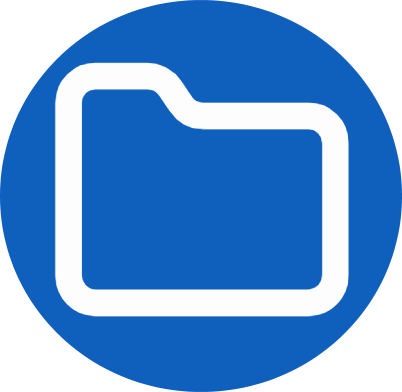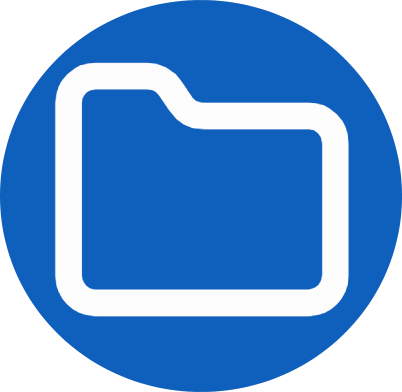Overview
DirectoryEasy provides an integrated blog system and advertising placements to help you create content and generate additional revenue for your directory.Blog Configuration
The Blog Configuration section lets you manage your directory’s blog settings.Enable/Disable Blog
Blog Toggle
You can enable or disable the blog on your website at any time.When enabled: Blog is accessible to visitors on your directory
When disabled: Blog is completely hidden from your directory
Featured Blog Posts Section
1
Enable Featured Section
Toggle on the option to show a Featured Blog Posts section on your blog page.
2
Set Custom Heading
Enter a custom heading for the featured section, such as “Featured Articles” or any text you prefer.
3
Save Changes
Click Save Changes to apply your blog configuration.
The featured section will display blog posts that you mark as “Featured” when creating or editing them.
Blog Categories
The Categories section lets you manage blog categories for your directory.Creating a Category
1
Click Add Category
Open the category creation form.
2
Enter Category Name
Type the name for your new category.
3
Save Category
Save to create the category.
Blog Posts
The Blog Posts section lets you manage all blog posts for your directory.Blog Posts Overview
Posts Management
Actions available:
- Click Add New to create a new post
- Use the filter to find posts by:
- Title
- Category
- Author
- Date
- Title
- Status
- Featured setting
- Author
- Publication date
- Edit post
- Delete post
- Manage individual posts from the menu
Creating a Blog Post
Click Add New to create a new blog post. You’ll see a form where you can fill in all the details.Featured Image
- Upload from Computer
- Use Image URL
Upload an image file directly from your computer.This image will appear at the top of your blog post.
Title and Description
Title
Title
Enter your blog post title.Make sure your title is clear and describes what your post is about.
Description
Description
Add a description that gives a good summary of your post.This helps readers understand what they’ll learn from your article.
Author Name
Post Author
The Author Name is automatically set to your account (for example, “Zakariae”), but you can change it if needed.This is useful when you want to:
- Attribute posts to different team members
- Use a different author name
- Credit guest contributors
Categories
Organize Your Post
Select Categories to organize your posts and help readers find them easily.You can choose one or multiple categories that best fit your post’s content.
Content Section
- Markdown Editor
- WYSIWYG Editor
Write your post using Markdown syntax.Markdown is a lightweight markup language that lets you format text using simple characters.
SEO Manager
Optimize Your Post
On the right side, you’ll see the SEO Manager, which shows how well your post is optimized for search engines.Try to improve your SEO score to get better visibility in search results.
Publishing Options
Published Status
Choose if you want your post to be Published, making it visible to everyone.Published: Post is live and public
Draft: Post is saved but not visible
Featured Status
Choose if you want your post to be Featured on your blog.Featured posts appear in the Featured Blog Posts section on your blog page.
Create Your Post
1
Review Your Content
Make sure all fields are filled in and your content looks good.
2
Check Settings
Verify your published and featured status settings.
3
Click Create
Click Create to publish your new blog post.
Your blog post is now live and ready for your audience!
Ads Configuration
The Ads Configuration section allows you to manage every advertising option available on your directory.Basic Ads Settings
1
Activate Advertisements
Enable the advertising system for your directory.
2
Set Section Headline
Add a headline for your ads section, such as “Our Partners”.
3
Add Tagline
Include a short tagline like “Interested in advertising here?”.
4
Save Settings
Apply your changes to activate the advertising system.
Display Settings
The Display Settings area gives you full control over where ads appear.Homepage Ads
You can show horizontal or vertical ads on the homepage.Choose the ad type and enable homepage display.
Listing Page Ads
You can show horizontal or vertical ads on listing pages.Select your preferred ad format for listing pages.
You have flexibility to display different ad formats in different locations depending on your needs.
Advertisement Plans
Create advertising packages that businesses can purchase.Creating an Advertisement Plan
1
Navigate to Plans
Go to the Advertisement Plans section.
2
Fill in Plan Details
Enter all the information for the package you want to offer.
3
Add Plan
Click Add Plan to save the package.
Plan Configuration Fields
Plan Name
Plan Name
Name the plan (for example, “Standard Ad”).This is how the plan will be identified in your system.
Display Label
Display Label
Set the display label (for example, “Standard”).This is what advertisers will see when viewing plan options.
Description
Description
Write a short description (for example, “Standard advertising package”).Explain what this advertising plan includes.
Price
Price
Set the price for this plan.You can set:
- A one-time price (for example, ninety-nine dollars)
- A monthly recurring price
Button Label
Button Label
Featured Plan
Featured Plan
Mark the plan as featured if you want it to stand out.Featured plans are highlighted to attract more attention.
Benefits Included
Benefits Included
List the benefits included in this plan.Examples:
- “Featured for thirty days”
- “Top listing position”
- Any other benefits you want to offer
Example Advertisement Plan
Ad Spots
The Ad Spots section lets you manage individual advertisement placements.Creating an Ad Spot
1
Click Add New Ad Spot
Start creating your first advertisement.
2
Enter Required Information
Fill in all the details for the ad spot.
3
Create Ad Spot
Click Create Ad Spot to add the advertisement to your directory.
Ad Spot Configuration
Title
Title
Add a title for the ad.This helps you identify and manage the ad in your dashboard.
Description
Description
Add a description for the ad.Include any notes or details about this advertisement.
Link URL
Link URL
Provide the link URL where users will be redirected when they click the ad.Make sure the link is correct and working.
Ad Image
Ad Image
Upload the ad image.Recommended size for vertical ads: 300 x 400 pixelsMake sure your image is the correct dimensions for the best display.
Active Status
Active Status
Set the ad to active so it will be displayed on your directory.Active: Ad is visible to visitors
Inactive: Ad is hidden
Display Order
Display Order
Choose the display order for the ad.Lower numbers appear first. For example:
- Order 1 = First position
- Order 2 = Second position
- Order 3 = Third position
Ad Type
Ad Type
Select the ad type.Options:
- Horizontal ad
- Vertical ad
Display Location
Display Location
Choose the display location.Options:
- Homepage
- Listing pages
- Both
Complete Ad Spot Example
Once everything is ready, click Create Ad Spot to add the advertisement to your directory.
Quick Reference
Blog Post Checklist
- Featured image added (upload or URL)
- Title entered
- Description written
- Author name set
- Categories selected
- Content written (Markdown or WYSIWYG)
- SEO Manager reviewed
- Published status set
- Featured status chosen (if applicable)
- Post created
Ad Spot Checklist
- Title entered
- Description added
- Link URL provided
- Ad image uploaded (300x400px for vertical)
- Active status enabled
- Display order set
- Ad type selected (horizontal/vertical)
- Display location chosen
- Ad spot created

